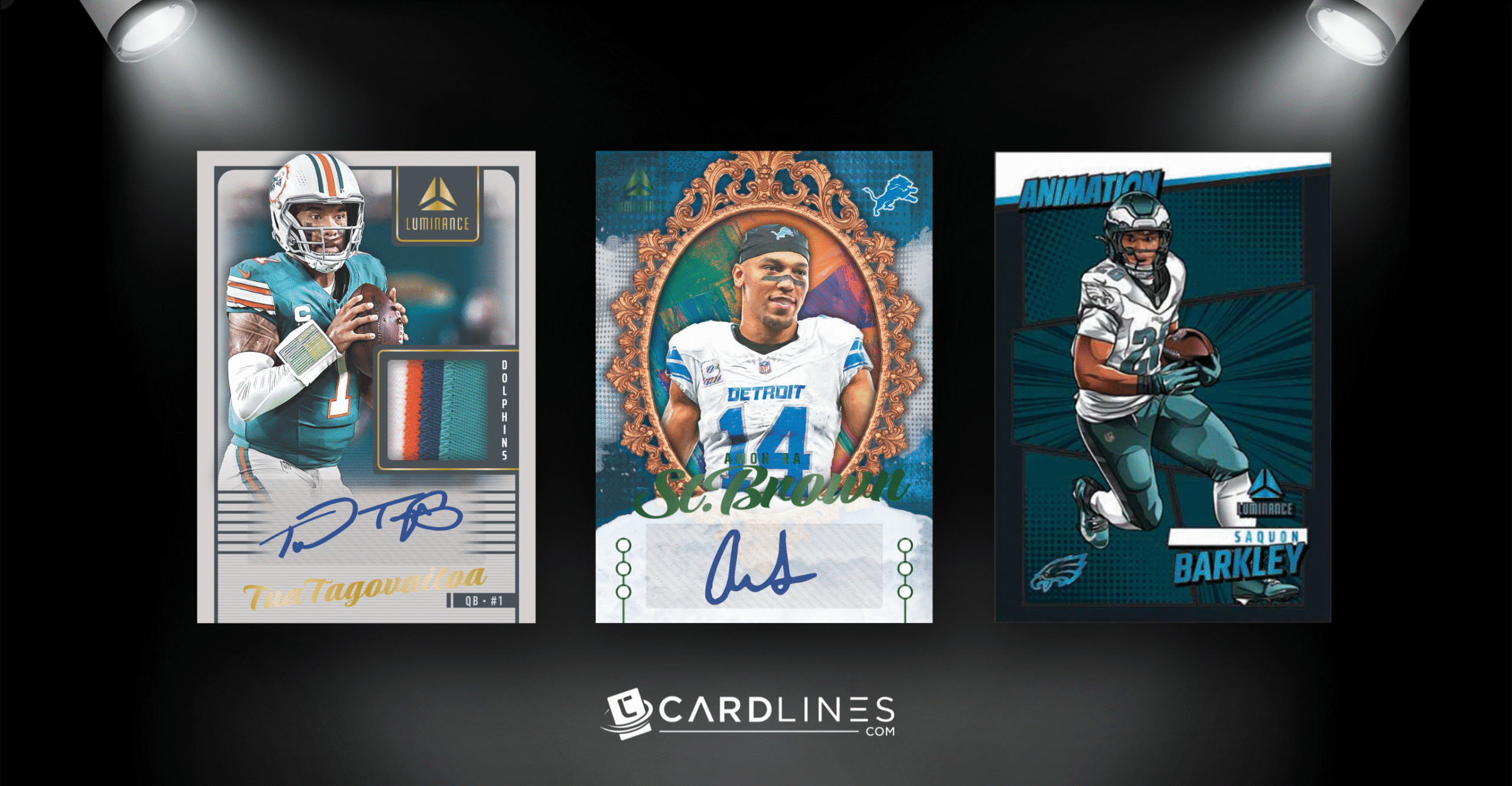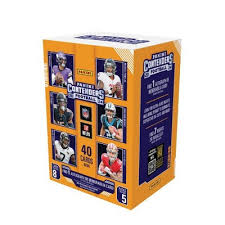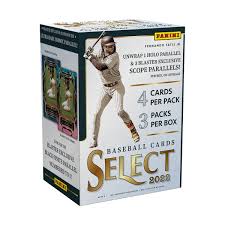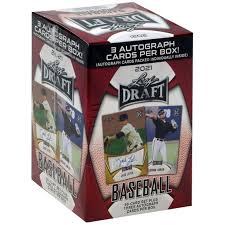

Here at Cardlines, we love Hall of Fame season. We love to talk about the veteran’s committee, returning candidates, and new candidates. We love exploring which current hitters and pitchers are sure-thing future Hall of Famers, and which pitchers and position players appear to be on the path.
One of those Hall of Fame discussions is getting underway, with the announcement of the 2023 Contemporary Baseball Era ballot.
But how does a player get into the Hall of Fame? What is the Contemporary Baseball Era committee? Who are the former players on this year’s ballot? Do they have a chance to be elected? And if someone is elected, what does that mean for investing in their rookie cards?
Today we’ll explore these questions, including a look at the players on the ballot, their rookie cards, and who isn’t on the ballot.
There are two distinct paths to election in the Baseball Hall of Fame. Interestingly enough, of the 268 players currently in the Hall of Fame, the breakdown of how they got elected is roughly 50-50.
A player becomes eligible for election into the Hall of Fame five years after retirement. If a player had a 10-year career and is selected by the committee, they appear on the ballot to be voted on by the Baseball Writers Association of America (BBWAA).
A player appears on the ballot until elected by appearing on 75% of ballots, dropping off the ballot by appearing on less than 5% of ballots. A player also can drop by appearing on the ballot for 10 years.
Now, after a player drops off the ballot, induction into the Hall of Fame isn’t off the table. The Hall of Fame knows that with more time, some players’ careers can be re-examined and their Hall of Fame case becomes more convincing. The Hall has a series of committees that meet to examine these players and their hall-of-fame merits.
These committees consist of 16 members that meet in person and vote. Just like the BBWAA ballot, 75% or more of the vote is required for induction, in this case, 12 out of 16 votes. The ballot consists of eight players. Each voter gets three votes.
The Hall of Fame reworked these committees in 2022, with three committees meeting once every three years to vote. The Contemporary Baseball Era Ballot for players who played the bulk of their career after 1980 meets starting in 2022. In 2023, the committee considering managers and executives for the same time period meets. In 2024, the committee considering pre-1980 personnel meets.

On Monday, November 6th, 2022 the ballot for the Contemporary Baseball Era election was announced.
Before we dive into the ballot, it’s worth noting just how many directions the nominating committee could have gone. A ballot could have been partially filled with just players who dropped off last year’s ballot. This includes players who with the stain of PED use (Bonds, Clemens, Sosa), who got less than 5% of the vote (Joe Nathan, Tim Hudson), or who aged off the ballot after appearing for ten years (Curt Schilling).
There are also stars of the 1980s who began their careers in the 1970s, some of who have appeared on veteran’s committee ballots in the past (such as Lou Whitaker or Dwight Evans).
Or there are other players, who either dropped off the Hall of Fame ballot quickly or for some other reason have been unconsidered for some time (Kenny Lofton, Kevin Brown).
With all of the above options and so many candidates to choose from, the expression “it’s an honor just to be nominated” rings true. So, who are the players who made the cut? What are their rookie cards? And who has a shot at being elected?
From a player selection standpoint, the eight players who will appear on the ballot are a mixed bag, for sure. There are a few players that just dropped off the ballot group. There are three more who have already appeared on two prior ballots and have not gotten elected. There’s one player who’s had one prior shot on the ballot and one newcomer. Who are they? Let’s dive in!
Albert Belle has appeared on two previous committee ballots without getting the necessary 75% of the vote to be elected. Belle’s career was short, with only 12 partial seasons and 10 full seasons. When on the field, though, Belle was an offensive force.
While he was worth only 40.1 WAR in his career (well below the Hall of Fame standard for left fielders) 36 of those came in just his best 7 seasons. Belle was a 5-time All-Star and 5-time Silver Slugger winner. He hit 381 home runs in his career, with a .295/.369/.564 career line and a .933 OPS and 144 OPS+.
He was all peak and no longevity, and to date that has kept voters away. His reputation for being surly hasn’t helped him any. He may be the 1990s version of Dick Allen, with an even more extreme peak vs. longevity angle.
Belle’s rookie cards appear in 1989 update/traded products, in this case, 1989 Fleer Update #U25 and 1989 Score Rookie & Traded #106T. In those days he went by the first name “Joey” before changing to “Albert” around 1991. Belle’s rookie cards are not in high demand with collectors, although the Fleer is far lower pop and sells for a bit more than the Score.
Shop for Albert (Joey) Belle rookie cards on eBay


| Card | Total PSA Pop | Recent Sale Pop | Recent Sale Price |
|---|---|---|---|
| 1989 Fleer Update Joey Belle #U25 | 1,175 | PSA 10 = 94 | PSA 10 = $45-60 |
| 1989 Score Rookie & Traded Joey Belle #106T | 9,624 | PSA 10 = 1,177 | PSA 10 = $25-30 |
Bonds, who we mentioned in our article on PED’s and the Hall of Fame is an all-time great player with a steroid cloud hanging over his legacy.
Barry Bonds just fell off the BBWAA Hall of Fame ballot last year, his 10th on the ballot, when his 66% total fell short of the 75% needed for election.
Bonds’ rookie cards appear in 1986 update/trading products. They remain strong sellers despite some junk wax era PSA populations.
For more on Bonds, check out our look at Barry Bonds Rookie Cards.
Shop for Barry Bonds rookie cards on eBay




| Card | Total PSA Pop | Recent Sale Pop | Recent Sale Price |
|---|---|---|---|
| 1986 Topps Traded Barry Bonds #11T | 55,196 | PSA 10 = 4,896 | PSA 10 = $300-350 |
| 1986 Topps Traded Tiffany Barry Bonds #11T | 2,605 | PSA 10 = 444 | PSA 10 = $5,600 – 8,000 |
| 1986 Donruss Rookies Barry Bonds #11 | 13,824 | PSA 10 = 1,605 | PSA 10 = $140-250 |
| 1986 Fleer Update Barry Bonds #U-14 | 22,566 | PSA 10 = 1,369 | PSA 10 = $350-400 |
Clemens falls into a lot of the same categories as Bonds, including “all-time great”,” steroid cloud”, and “just fell off the ballot last year”. In Clemens case, he garnered 65.2% of the vote.
So far, the voters have kept the steroid crowd out of Cooperstown. If and when that changes, Clemens and Bonds are likely the first two who will be inducted. Will it be this year? It will be fascinating to see.
Clemens’ rookie cards appear in the 1985 base products of Topps, Donruss, and Fleer. He also appeared in the tough 1984 Fleer Update set. All of Clemens’ rookie cards are strong sellers, as fans recognize his status as one of the best pitchers ever.
Shop for Roger Clemens rookie cards on eBay





| Year/Set | Total PSA Pop | Recent Sale Pop | Recent Sale Price |
|---|---|---|---|
| 1985 Topps Roger Clemens #181 | 29,960 | PSA 10 = 359 | PSA 10 = $1,000-1,300 |
| 1985 Donruss Roger Clemens #273 | 10,051 | PSA 10 = 571 | PSA 10 = $400-625 |
| 1985 Fleer Roger Clemens #155 | 6,909 | PSA 10 = 173 | PSA 10 = $750-1,000 |
| 1985 Topps Tiffany Roger Clemens #181 | 1,600 | PSA 10 = 48 | PSA 10 = $10,000 - 15,000 |
| 1984 Fleer Update Roger Clemens #U-27 | 6,028 | PSA 10 = 584 | PSA 10 = $1,700-1,900 |
Mattingly has appeared on two prior committee ballots without garnering enough votes to be elected.
Mattingly started his career with a number of epic seasons. From 1984 to 1989, he was one of the top handful of players in the game. Unfortunately, injuries robbed him of his power and the back half of his career could not match the first half.
Even with the drop-off, Mattingly was a six-time All-Star, nine-time Gold Glove winner, and won both an MVP award and a batting title. His final batting line was .307/.358/.471, good for an OP of .830 and an OPS+ of 127. But he only hit 222 home runs in his career and finished with 2,153 career hits.
Of his 42.4 career WAR, Mattingly garnered 35.8 of the in his peak 7 seasons. Similar to Belle, the peak is there but the longevity, or lack thereof, has kept him out to date.
Mattingly’s rookie cards appear in 1984 Topps, Donruss, and Fleer. For a while, they were some of the hottest cards in the hobby, and still sell strongly.
Shop for Don Mattingly rookie cards on eBay




| Card | Total PSA Pop | Recent Sale Pop | Recent Sale Price |
|---|---|---|---|
| 1984 Donruss Don Mattingly #248 | 10,515 | PSA 10 = 301 | PSA 10 = $4,000-6,000 |
| 1984 Fleer Don Mattingly #131 | 5,635 | PSA 10 = 414 | PSA 10 = $650-900 |
| 1984 Topps Don Mattingly #8 | 17,713 | PSA 10 = 886 | PSA 10 = $800-900 |
| 1984 Topps Tiffany Don Mattingly #8 | 873 | PSA 10 = 52 | PSA 10 = $5,500 |
Update: Good news for Fred McGriff fans! He was the lone player elected to the Hall of Fame through the Contemporary Baseball Ballot.
While Fred McGriff’s 52.6 WAR is a bit low for a Hall of Fame first baseman, voters may be swayed by his 493 career home runs. Seen as one of the last “pure” sluggers before the offensive explosion of the late 1990s and early 2000s, McGriff is likely to get strong consideration.
If not for the 1994 strike, McGriff likely would have hit those 7 home runs he needed to reach 500 and been in the hall of fame long ago.
Instead, McGriff spent 10 years on the ballot, peaking at 39.8% of the vote in 2019, his final year on the ballot. Will voters reconsider with a bit of time and context? McGriff’s rookie cards in the 1986 Donruss and 1986 Leaf (the Canadian version of Donruss) sets. The Leaf is harder to find, with no recent comp sales on a PSA 10 due to a pop of only 54.
Shop for a Fred McGriff rookie card on eBay


| Card | Total PSA Pop | Precent Sale Pop | Recent Sale Price |
|---|---|---|---|
| 1986 Donruss Fred McGriff #28 | 3,704 | PSA 10 = 409 | PSA 10 = $325-400 |
| 1986 Leaf Fred McGriff #28 | 522 | PSA 9 = 168 | PSA 9 = $90 |
Dale Murphy is another player who has appeared on committee ballots twice before without getting past the threshold to get elected.
Much like Mattingly, Murphy felt like a Hall of Famer early in his career. He won back-to-back MVPs in 1982 and 1983. Unfortunately, around age 32, Murphy’s career started going downhill, fast.
Dale Murphy’s career WAR of 46.5 is again a bit low for a Hall of Fame center fielder. 41.2 out of the 46.5 WAR were compiled in just Murphy’s 7 best seasons. Murphy’s sole rookie card is the 1977 Topps Rookie Catchers #476. PSA 9’s sell strongly in the $270-360 range. There are only 61 PSA 10s, and they sell in the $5,500-6,000.

| Card | Total PSA Pop | Recent Sale Pop | Recent Sale Price |
|---|---|---|---|
| 1977 Topps Rookie Catchers #476 | 3,962 | PSA 9 = 617 | PSA 9 = $270-360 |
Shop for Dale Murphy rookie cards on eBay
Palmeiro is one of only seven players with over 3,000 career hits and 500 career home runs. He did it while only being an All-Star four times and winning two Silver Sluggers. Where some players on the ballot were all peak value, Raffy was very good for a long time.
Unfortunately for Palmeiro, he’s probably most known for finger-wagging while testifying before Congress on steroid use in baseball, then getting busted shortly thereafter for a failed test. Palmeiro lasted only 4 years on the BBWAA ballot before dropping off, peaking at 12.6% of the vote.
Palmeiro’s rookie cards appear in 1987. Specifically, 1987 Donruss #43 and Donruss Rookies #47, plus 1987 Topps and Topps Tiffany #634. Other than the Tiffany, these are very inexpensive cards, even in PSA 10 slabs.
Shop for Rafael Palmeiro rookie cards on eBay




| Card | Total PSA Pop | Recent Sale Pop | Recent Sale Price |
|---|---|---|---|
| 1987 Donruss Rafael Palmeiro #43 | 10,865 | PSA 10 = 854 | PSA 10 = $35 |
| 1987 Donruss The Rookies Rafael Palmeiro #47 | 1,415 | PSA 10 = 195 | PSA 10 = $20-25 |
| 1987 Topps Rafael Palmeiro #634 | 5,797 | PSA 10 = 771 | PSA 10 = $15-25 |
| 1987 Topps Tiffany Rafael Palmeiro #634 | 1,979 | PSA 10 = 256 | PSA 10 = $125-150 |
Like Bond and Clemens, Curt Schilling just dropped off the ballot this last cycle. He aged off the ballot with 58.6% of the vote. Unlike Bonds and Clemens, though, the question with Schilling was never steroids. It was his generally hostile nature and fringe politics. Miss the days when the Hall of Fame was just about the play on the field? Me too!
Schilling finished his career with a 216-146 record with a 3.46 career ERA. His 79.5 WAR is 26th all-time among starting pitchers. Of those pitchers ahead of Schilling on the list, only Clemens isn’t already in the Hall of Fame.
Schilling’s sole rookie card is the 1989 Donruss #635. That’s about the junkiest of the junk wax era. Even in a PSA 10 the card is still very reasonable.
Shop for Curt Schilling rookie cards on eBay

| Card | Total PSA Pop | Recent Sale Pop | Recent Sale Price |
|---|---|---|---|
| 1989 Donruss Curt Schilling #635 | 7,244 | PSA 10 = 1,459 | PSA 10 = $50-80 |
As mentioned above, there are a number of directions that the nominating panel could have gone with this year’s ballot, and a lot of great potential candidates.
So, who didn’t make this year’s ballot that we were hoping to see?
Whitaker’s 71.4 WAR ranks 7th all-time among second basemen. With the recent election of his former long-time teammates Alan Trammell and Jack Morris, it’s a shame that Whitaker isn’t getting a chance to join them. It’s long overdue.
His rookie card is 1978 Topps Rookie Second Basement #708. If you’re looking for a tougher card, look for the 1978 Topps Burger King Detroit Tigers #13.
Shop for Lou Whitaker rookie cards on eBay
Brown has some PED connection, which doesn’t help his candidacy. But with a 211-144 record and a 3.68 career ERA, Brown is a solid candidate. Brown’s 67.8 WAR puts him 40th all-time for starting pitchers, surrounded by Hall of Famers on the list.
On Brown’s one year on the BBWAA ballot (2011) he appeared on only 2.1% of the ballots and dropped off the ballot, making him one of the most accomplished “one and done” candidates ever.
Brown’s sole rookie card is the 1987 Donruss #627. It was produced in the junk wax era, and Brown has been an under-the-radar candidate, so the card doesn’t sell for a lot, even graded. It’s been graded by PSA 5,125 times, so they’re fairly easy to come across.
Shop for Kevin Brown rookie cards on eBay
On the theme of “best one-and-done candidates ever with only one rookie card”, Kenny Lofton is another strong candidate who was overlooked on this ballot. His only rookie card is the 1991 Bowman #565. PSA has only graded 244 copies of the card, making it a bit tough to find in high grades.
Lofton was worth 68.4 WAR in his career, good for 9th all-time among centerfielders, just a bit below new BBWAA candidate Carlos Beltran. In his one year on the HOF ballot, Lofton received only 3.2% of the vote and dropped off the BBWAA ballot.
Shop for Kenny Lofton rookie cards on eBay
Cone made one appearance on the BBWAA ballot, and only received 3.9% of the vote, dropping off. But he was 194-126 with a 3.46 ERA during his career. His 62.3 WAR ranks 54th all-time among starting pitchers. That’s towards the bottom end of the Hall of Fame standard, but he deserves a second look. For context, his career WAR is the same as another former Yankee, C.C. Sabathia.
Cone’s rookie cards include 1987 Donruss #502 and 1987 Topps Traded #24T.
Shop for David Cone rookie cards on eBay
The most likely conclusion in any veteran’s committee ballot is that no players get elected to the Hall of Fame. But of course last year, we saw a number new Hall of Famers elected by the Hall of Fame via the committees (Gil Hodges, Jim Kaat, Tony Oliva, Buck O’Neil, Minnie Minoso), so anything can happen.
If any of these players do get elected, you can expect a temporary jump in demand, which will push prices upward. Long term, much of these new price gains will likely fade, although the player’s rookie card should still sell for a premium over pre-election prices.
My fear is that the strong nature of all/most of the candidates splits the vote, leading to nobody getting over 75% of the vote. The most likely candidates to make the cut? I’ll go with Fred McGriff and Curt Schilling.
The Hall of Fame is the ultimate honor that can be bestowed upon a baseball player. Only the top 1% of all players in history have been elected to the Hall of Fame.
If one or more of the players on the 2023 Contemporary Baseball Era Ballot gets elected, they will join this select group of the game’s all-time greats.
The honor will push their card prices to new levels, with some of that being temporary, but with a new price floor being introduced.
With the off-season upon us, Hall of Fame conversations represent some of the most exciting topics of discussion during the hot stove winter.
I hit a SWEET auto from the #1 overall pick at PCB hobby
The Ultimate 2024 Football Card Brand Tier List (Panini vs. Topps and more!)
2025 Topps All Star Game Mega Box Product Review
Ripping the new Topps All Star Game mega box.
Is this new sports card store the BEST VALUE around?
I Tested eBay Auction Promotions So You Don’t Have To!
I deep-dove on Fanatics Collect so you don't have to (but should you?)
Panini is launching a WNBA Product at $30,000!?







2022 Topps Heritage Baseball Blaster Box Configuration: 7 Packs per Box – 9 Cards per Box. Plus 1 extra pack.









Keep up on breaking Sports Card News, our latest articles, product specials and exclusive content with expert analysis of hobby trends.

© Copyright 2025 - All rights reserved Cardlines.com / Media Techs LLC - Sports Card News, Reviews, Releases and BREAKS - #thehobby.
Important: When you click on links to various merchants on this site and make a purchase, this can result in this site earning a commission. Affiliate programs and affiliations include, but are not limited to, the eBay Partner Network.
Sports Card Scavenger Hunt! (5,000 Subscriber Special!)
Cardlines 14 hours ago